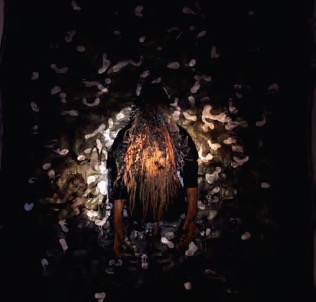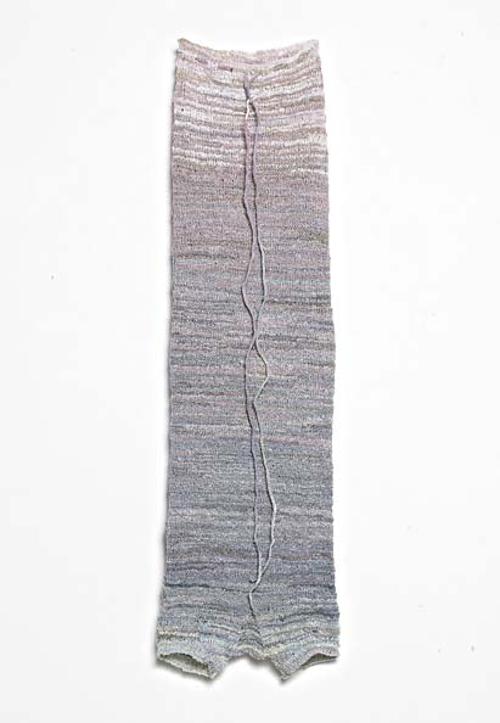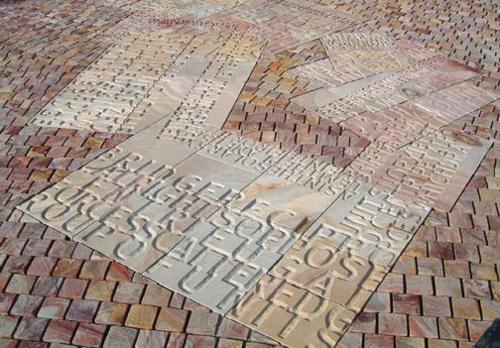
This exhibition was inspired by Stevie Wonder's concept album 'Journey Through the Secret Life of Plants' (1979). The album was a soundtrack for a documentary that explored the spiritual and emotional relationship between plants and humans and was in turn based on the best-selling book titled 'The Secret Life of Plants' written by Peter Tompkins and Christopher Bird during the 1970s at a time when academic studies began to investigate the psychology of plants.
The show filled the five gallery spaces of Linden and began with Richard Giblett’s 'Untitled' (2009) a large complex structure raising a plywood platform to the ceiling. From an initial glance it was difficult to gauge how Giblett’s work related to the show’s theme. However his history of constructing abstracted and artificial gardens in timber suggests that this work depicts a tangled root structure. Sydney-based photographer Rewi Lyall’s image of an abandoned building explores the idea of urban guerrilla plant life by focusing on both street art and plants growing on an abandoned building. The photograph itself appeared to be decaying with its yellowish hues and crinkled corners. As expressed in Wonder’s music these weeds possess their own dignity as well as adding hope to a dying artefact.
In contrast five drawings by Starlie Geikie embody traditional quilt-making skills and play homage to Laura Ashley’s floral pattern designs. These small pattern designs are composed in a series of geometric shapes that are similar to a plant’s cell structure. Nonetheless, the shapes remain a decorative ornament. Four paintings by Sally Ross are based on photographs in the 1948 book 'Flowers in Winter' by Patrick M. Synge. The paintings are executed all in grey and Ross’s detailed technique of cross-hatching and stipple add complexity to a sense of the secret life of flowers.
In contrast Luke Pither, Paul Gazzola and Simon Pericich offer a more contemporary approach to the 'Secret Life of Plants'. Luke Pither’s 'Under Rock' (2009) is a large painting of vegetation of which only sections can be seen as it is displayed behind a false wall. This forces us to have a close reflective encounter with the image. Its bold colours and linear composition add a sense of mystery to its imaging of the hidden vegetation found under a rock. Pither notes that 'the simple pleasure of turning a rock is to hold childhood in one hand and death in the other.’ Gazzola’s dvd 'Weed' (2006-08), shown under the floorboards, demonstrates the experience of sitting back and reflecting upon a large palm tree in a park. In ‘Bastard Saint of Meritocracy (weedhead)' (2009) Pericich has constructed a scarecrow sculpture, a three dimensional version of a photograph shown at Gertrude St in 2008, reflecting upon the ominous aspects of contemporary culture and consumerism. Here, weeds allude to the suffering of culture. He calls it ‘a harbinger for a planet obsessed with a shiny greener future.’

The exhibition takes a surprise turn by presenting a series of botanical illustrations by Victorian botanical artists who will be replaced by West Australians in Fremantle. The inclusion of these illustrations is unexpected yet this is a critical part of the show as the plants’ histories and their reasons for existence is addressed in each illustration. The curator, who is from WA, points out that this curious addition to the exhibition includes a piece made by his mother (perhaps the initial influence on his interest in plants?)
Jane Burton’s gloomy photograph of a potplant represents the dark side of a plant’s life. 'House Plant' (2008) is the most compelling image on show. Wonder’s song 'Secret Life of Plants' describes how an innocent plant is often harmed by humans:
"A species smaller than the eye can see
Or larger than most living things
And yet we take from it without consent
Our shelter, food, habiliment"
Burton’s photograph clearly depicts how the potplant struggles to maintain some form of life as only a small hint of sunlight spills through the Venetian blinds and makes us contemplate the many times plants have been removed from their natural environments to be used as decorative ornaments.












